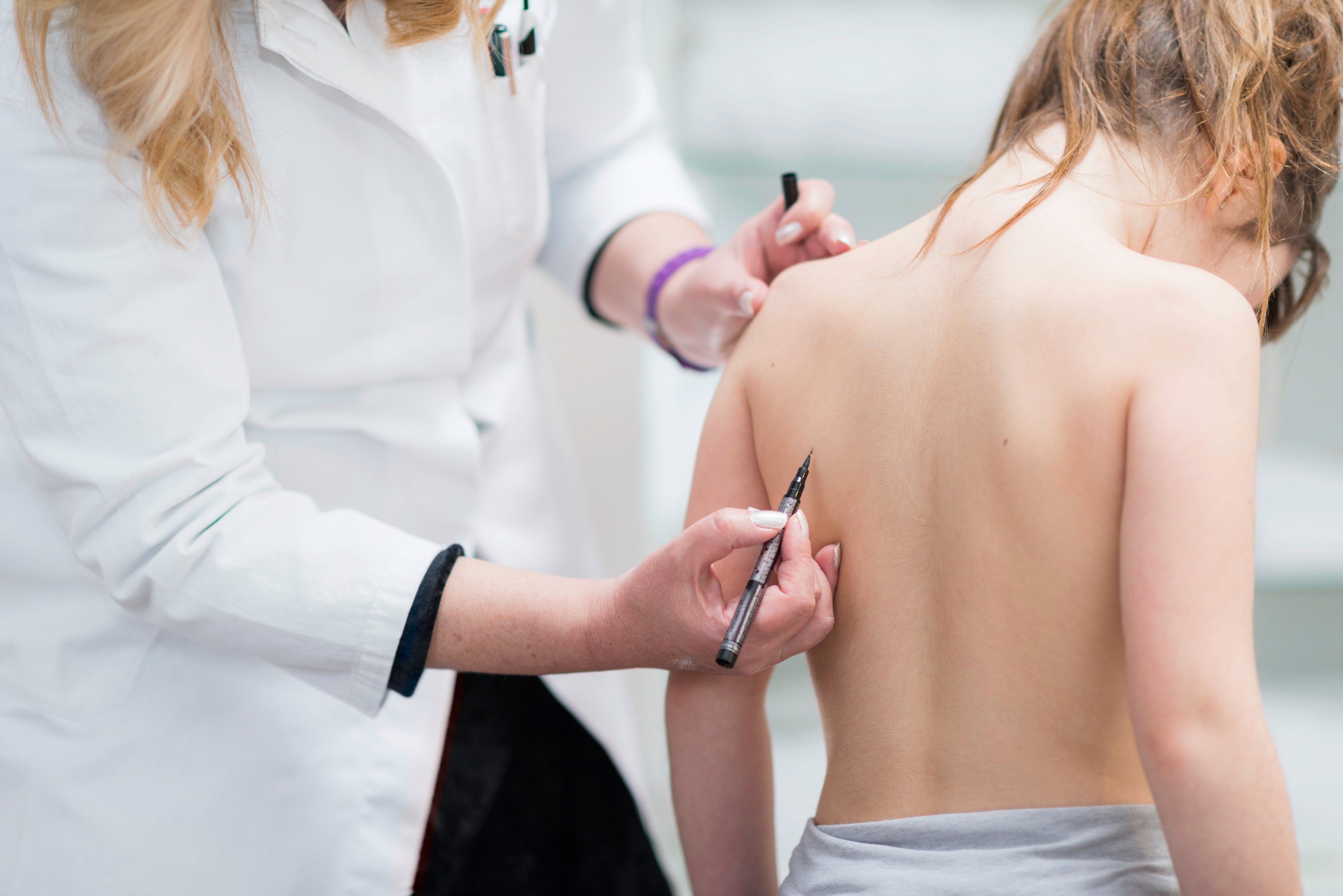Immediate risks of surgery are those risks that can occur within the few weeks after surgery.
Complications after surgery
Here is a list of possible complications and how likely they are to happen.
| Complication | Risk |
|---|---|
| Acquiring a disease through a blood transfusion | HIV: 1 in 10 million patients Hepatitis C: 1 in 3 million patients |
| Neurologic complications, meaning problems with the nervous system | Numbness, weakness, abnormal sensation: 1% to 4% of patients Paralysis, meaning loss of use of legs and/or bowel or bladder function: less than 1% of patients |
| Infection | About 2% |
| Lung complications | If surgery involves work on the front of the spine or ribs: 10% If surgery involves work on the back of the spine only: less than 1% |
| Urinary tract infection | Less than 1% |
| Gastrointestinal complications (stomach and bowel) | Ileus and superior mesenteric artery syndrome: 2% to 3% |
| Deep vein thrombosis (blood clot) | Less than 1% |
| Overall complications | About 13% to 26% of patients will have one of these or other complications |
Complications from blood transfusions
Scoliosis surgery involves some blood loss. Your teen might need blood transfusions to replace this blood loss. Receiving blood from a blood bank has some risks, such as getting HIV (AIDS) or hepatitis C virus. The chance of getting HIV (AIDS) is less than 1 in 10 million. The chance of getting hepatitis C is less than 1 in 3 million. Your teen can reduce this risk by pre-donating their own blood.
Neurologic complications
Neurologic complications can range from loss of skin sensation, to weakness or loss of strength in the feet or legs, to paralysis. It can also affect bowel and bladder control. These complications can improve over time, but some may be permanent. The risk of neurologic complications ranges from 1% to 4% overall. The risk of paralysis is less than 1%.
Infection
Infection can be superficial, meaning around the surgical incision. Infection can also be deep, meaning within the spinal column. Infection can show up as early as within the first few weeks after surgery or as late as a few years after surgery. Infections can be treated with dressing changes and antibiotics. Sometimes surgery is needed to clean out the infected tissue. Infection can sometimes cause the spine not to heal in a straightened position. Risk of infection is about 2%.
Lung complications
Lung complications occur in about 10% of teens having surgery on the front of their spine. These complications happen in less than 1% of teens having surgery on the back of their spine.
Complications affecting the lungs include the following:
- Inflammation of the lung (pneumonia), which is treated with antibiotics if needed.
- Partial or complete collapse of lung, which is treated by a chest tube.
- Fluid collection around the lung, which is more common in teens having surgery on the front of the spine. A chest tube is needed to drain the fluid.
Urinary tract infection
In the first few days after surgery, your teen will have a thin tube called a catheter inserted in their bladder to drain urine. Urinary tract infections (UTIs) can arise due to the catheter. UTIs can be treated with antibiotics. Risk of UTIs is less than 1%.
Intestinal blockage
Scoliosis surgery can cause a condition called ileus, where the intestines stop contracting and may become blocked. Ileus can result in abdominal cramping, swelling of the abdomen, nausea, and vomiting. Treatment means that patients do not take food or water by mouth. They receive fluids through IV (intravenous needle). Alternately, they may have a tube inserted through the nose into their stomach to receive liquid nutrition. Sometimes a tube is inserted into the stomach to drain any excess fluids. Ileus generally gets better in five to 10 days. The risk of ileus is about 2%.
Scoliosis surgery can cause another condition called superior mesenteric artery (SMA) syndrome. This is when the small intestine is blocked by pressure from the SMA. The symptoms are more severe than in ileus and tend to last more than 10 days. Symptoms include nausea, vomiting, and pain. Treatment includes a feeding tube placed through the nose into the stomach for liquid nutrition. Another tube is placed in the intestine to drain fluids. SMA syndrome can last from one to two months. Body weight and eating patterns may not return to normal for several months. The risk of SMA syndrome is about 3%. Underweight females tend to be more at risk.
Blood clots in the thighs or leg
A deep vein thrombosis (DVT) is a blood clot in the veins of the thigh or leg. These clots can occur after surgery when a patient is bed ridden and not moving around as much as usual. These blood clots can break off and move to the lung where it can cause respiratory distress. Surgeons give patients a medication called heparin that works both to prevent and treat blood clots. The risk of DVT is less than 1%.
Pain where the bone chips are removed
Surgeons sometimes take small amounts of bone, called bone chips or a bone graft, from the hip and place it on the spine during surgery. This helps to increase fusion in the spine. Some patients will feel pain at the hip where this bone is taken. This is painful immediately after surgery. However, one year following surgery, less than 12% of patients had pain. Those who still had pain tend to have only mild pain.
